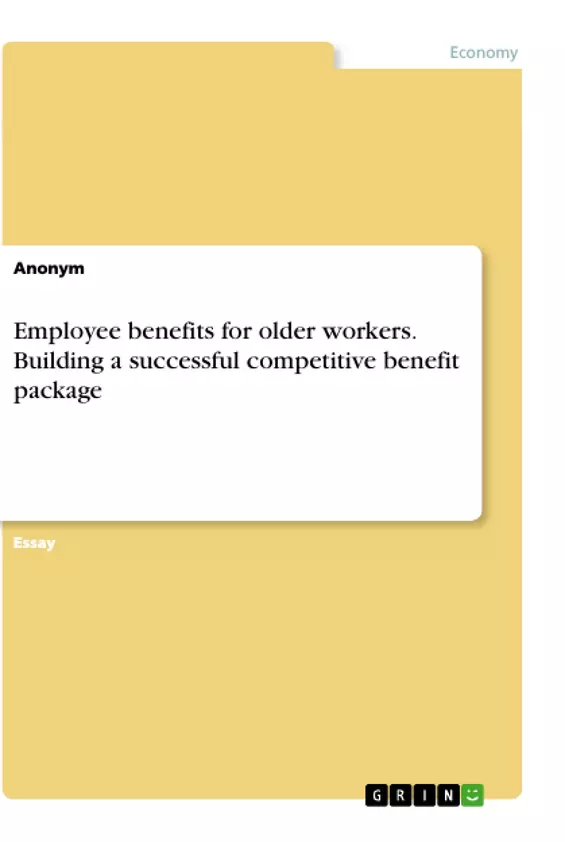The paper describes employee benefits for older workers. It explains that the role that older employees play in the organisations cannot be understated. They have vast experience in their various areas of specialisation if they are carefully developed and managed.
The older employees can be more effective and efficient thus leading to better performance of the business. Despite the important role that older employees play in their organisations, a number of firms and employers are of the perception that the older employees are change resistant, have low self-esteem and are generally difficult or hard to motivate. On the contrary, the older employees are highly reliable, loyal, have rich skill sets and greater knowledge of the organisation, and have a higher commitment to the organisation and the work. This indicates that older employees’ benefits is an essential element that can be used to boost the performance of the organisation.
Inhaltsverzeichnis (Table of Contents)
- Employee Benefits for Older Workers
- Benefit Package That Meets the Needs of All Ages and Demographics of Employees
- Training and Learning Programs
- Work-Life Balance Programs
- Flexible Work Arrangements
- Older Employees' Benefits
- Flexible Work Schedules
- Training
- Building a Successful Competitive Benefit Package
Zielsetzung und Themenschwerpunkte (Objectives and Key Themes)
This paper examines the crucial role of employee benefits in attracting, retaining, and motivating older workers. It explores the specific needs of this demographic group and how organizations can develop competitive benefits packages that cater to their unique requirements.
- The importance of employee benefits for older workers
- The benefits that are most appealing to older workers
- How to build a competitive benefits package for older workers
- The impact of employee benefits on the retention and productivity of older workers
- The challenges and opportunities associated with managing a diverse workforce.
Zusammenfassung der Kapitel (Chapter Summaries)
The first section of the paper introduces the concept of employee benefits and their importance in human resource management. It argues that all demographics, including older workers, require training and learning programs as part of their benefits package. The section also emphasizes the need for work-life balance programs and flexible work arrangements to cater to the needs of a diverse workforce. The second section of the paper delves into the specific benefits that are crucial for older workers. It focuses on the benefits that can help older employees remain committed and motivated, such as flexible work schedules and targeted training programs.
Schlüsselwörter (Keywords)
Employee benefits, older workers, training, work-life balance, flexible work arrangements, retention, productivity, retirement, skills gap, diversity, workforce planning.
- Quote paper
- Anonym (Author), 2019, Employee benefits for older workers. Building a successful competitive benefit package, Munich, GRIN Verlag, https://www.grin.com/document/498866



